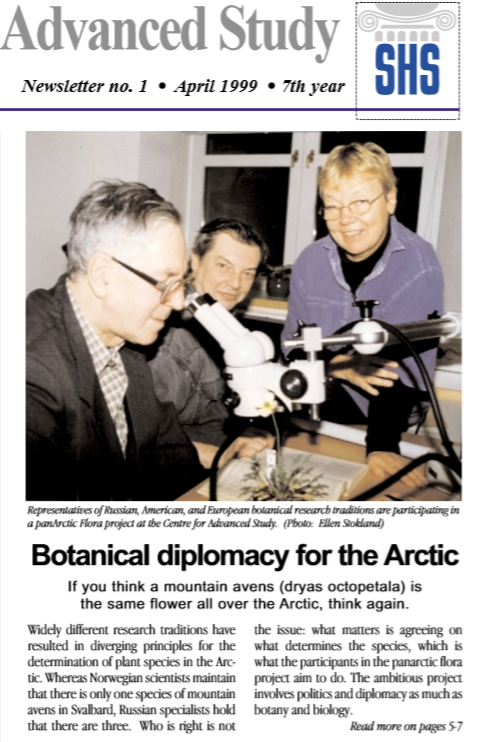Alumni Spotlight: Inger Nordal about species and Arctic collaboration

Inger Nordal is the alumna of the month for May.
The UN recently launched an alarming report about how one million animal and plant species face extinction because of the way humans live.
With this grim message in mind, CAS decided to talk with Inger Nordal who led the CAS project A Pan-Arctic Flora Project - the Species Concept in the High North together with Professor Reidar Elven back in 1998-99.
Not only had the Cold War split the world politically and geographically, Russian, American, and West-European researchers in biology had developed different traditions for defining and labelling plant and animal species in the Arctic.

Inger Nordal’s CAS project aimed at developing a universal and united species concept. She is the alumna of the month!
How did the project go?
The year at CAS was extremely fruitful. Knowing what the species are, and where they grow, is obviously fundamental for the conservation of biodiversity in the Arctic and elsewhere.
When we started the Pan-Arctic Flora (PAF) project at CAS, it was more or less clear that three different “camps” existed. The Russian and the American species concepts were the most deviating: The American with a very wide species concept, i.e. they were “lumpers”, and the Russian with a very narrow species concept, i.e. they were “splitters”. The European species concept was somewhere in between.
During the year at CAS, we borrowed herbarium specimens and taxonomic literature from all relevant herbaria/libraries to CAS, so we had enough material at hand. We had intensive discussions and heated debates. Nevertheless, we managed more or less to “harmonize” the different species concepts in the Arctic. When unification was difficult, we at least specified the different views.
In the CAS project abstract, you asked, “Is a white Dryas in Siberia the same as a white Dryas in Svalbard or in Alaska? That question is impossible to answer”. Is this question still unanswerable?
Scholars actually agreed upon the Dryas (reinrose in Norwegian) question. The European Dryas octopetala grows in the Arctic and Alpine Europe, and is not the same species that occurs in Arctic America. In Siberia, different species meet, and probably hybridize. The Russians indicated three different species on Svalbard, whereas Norwegian botanists interpreted the populations as belonging to one variable species, possibly with some introgression from Siberian species. The Beringean area appears to be the “evolutionary hotspot” for the genus.
How was it for you, as a researcher in an empirical field, to be at CAS? Do you believe it is (still) fruitful for a botanist to spend time at CAS?
The year at CAS is one of the most efficient and fruitful research periods of my life. With a “sabbatical year” from the University of Oslo, and generous grants to invite researchers from Russia, Europe, Canada and Alaska (and not to mention full support from an excellent administration!) it had to be successful. Certainly, modern biology is dependent on laboratory and greenhouse facilities, which CAS cannot provide, but with internet, borrowed books and herbarium specimens available, the infrastructure was perfect for the basic work creating a scientific flora.

How did your project develop after the year at CAS?
The Panarctic Flora Initiative led to a long-lasting collaboration among Arctic specialists in botany from Russia, Canada, USA, and Norway. In 2011, twelve years after the CAS event, an extended and improved survey of the complete Arctic flora was presented online. The University of Alaska is now applying for funding to upgrade the PAF database.
You write, “hot spots are important when it comes to identifying strategies for biological preservation”. In what way? What can, and should be, done when it comes to the process of species extinction that the UN write about in its report?
The PAF database presents the distribution of Arctic plant species. The database also identifies species with narrow distribution areas. Such areas, with several rare and endemic species, should urgently get status as national parks or nature reserves. Otherwise, climate warming represents an enormous problem for Arctic plants. It is now up to the politicians to act, and Arctic collaboration on this level is more important than ever.
What advice do you have for future CAS project leaders?
For the Panarctic Flora Project, with taxonomists specializing in different plant groups, it turned out to be wise to invite participants for shorter periods and concentrating on few plant groups at a time. For other scientific fields it may be better with fewer people and longer periods for each scientist. Otherwise, enjoy the year without teaching and administrative duties!